When Hull became Hell: Memories of the Blitz
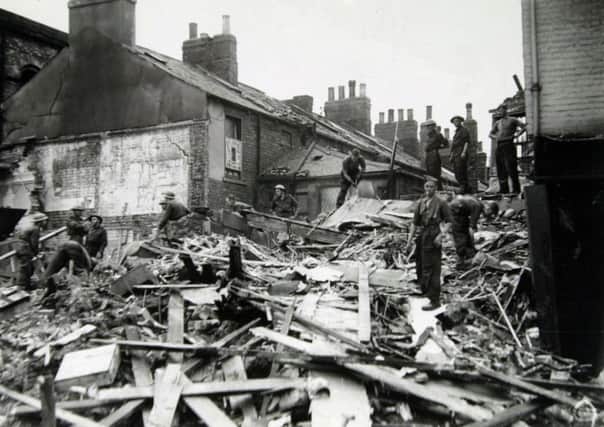

FRANK Inman was just nine years old when the Luftwaffe unleashed its wrath on Hull in the spring of 1941, but he remembers it vividly.
Advertisement
Hide AdAdvertisement
Hide AdThe war was just four months old when he was evacuated from his home in Hull to Sutton, a small village eight miles north of York.
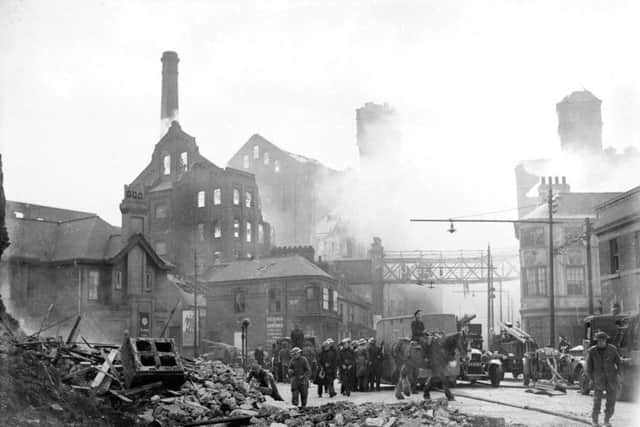

He didn’t get on with the family he was living with and ran away – on the day that Hull suffered its worst raid of the entire war.
“I wanted to go back to Hull and by hook or by crook I got there, I hitch- hiked on tractors and I walked for miles. I was guided back by the fires glowing in the distance,” he says.
“I got there at 11 o’clock on the Saturday morning, this was May 10, and I saw all the devastation. That’s when the war really started for me.”
Advertisement
Hide AdAdvertisement
Hide AdHis mother, not surprisingly, was shocked to see him. “I knew where everyone would be so I went to the bus stop to wait for my mother and when she got off the bus the first thing she did was give me a right clip round the ear.”
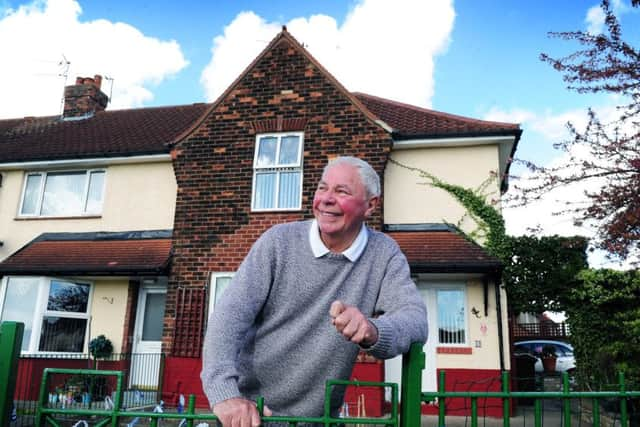

He remained with his family in Hull for the rest of the war and remembers the scenes of devastation in the wake of the May bombing raids.
“We lived on the east side of the city about a mile from the docks and the damage there and in the city centre was horrendous.
“You couldn’t walk anywhere without seeing a building damaged or a street cordoned off because of unexploded bombs.”
Advertisement
Hide AdAdvertisement
Hide AdFrank, like many other children in the city, went around bomb sites with his homemade go-kart, or “bogey” as they were known, collecting shrapnel.
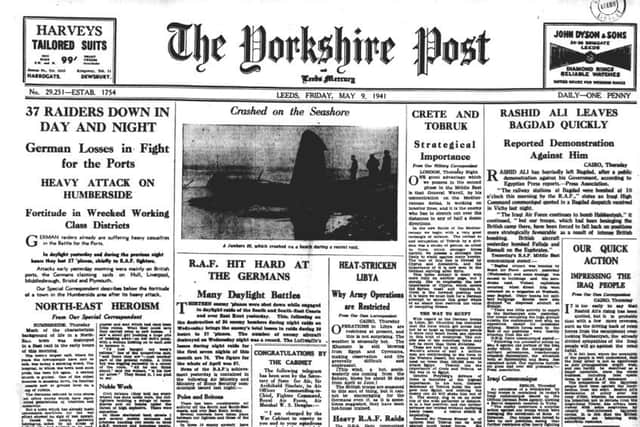

He recalls seeing the approaching German bombers. “You’d hear them coming over and you could see them heading down the river, it had a silver sheen and they used it to guide them. You knew if they were flying low that Hull was going to get it,” he says.
“I was never frightened, I was probably too young. It was only as I got a bit older and spoke to friends whose dads had been killed that I started to take it more seriously. Before then it seemed like a bit of an adventure,” says Frank, now 84.
Hull had been bombed before with particularly heavy raids in March and April of 1941.
Advertisement
Hide AdAdvertisement
Hide AdThe city then suffered what is known locally as the Hull Blitz, during two nights of terror in May that left 420 people dead and a further 350 seriously injured.
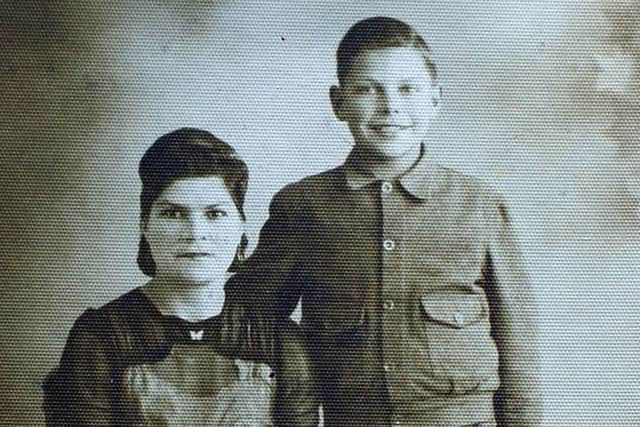

Overnight between May 7 and May 8, more than 70 German aircraft dropped 110 tonnes of high explosives, as well as 9,648 incendiary bombs.
As so often happened, the bombs were dropped on Hull as the planes flew home over the East Coast because they had been unable to reach their primary target, which in this case was Liverpool.
But worse was to come. Between midnight on May 8 and 3.40am on May 9, a total of 120 bombers dropped 157 tonnes of high explosives and 19,467 incendiaries. The intended target on this occasion had been Sheffield.
Advertisement
Hide AdAdvertisement
Hide AdAs well as being bombed because other targets could not be found or were too well protected, Hull’s docks, industry and railways were key targets themselves.
Reports at the time didn’t mention Hull by name in order to divert attention and play down its significance, and instead it was referred obliquely as a “north-east town”.
Hull had been the subject of a “D Notice” – a voluntary request to news media not to disclose certain information for reasons of national security, as the Cabinet was concerned the city’s suffering would lower national morale.


But while the rest of the country could only guess at the identity of the latest victims of the Nazis, the people of Hull knew to their cost it was they who bore the brunt of the nightly raids of death and destruction.
Advertisement
Hide AdAdvertisement
Hide AdOn May 9, The Yorkshire Post carried a front page report with the the headline “North-East Heroism.”
Written by the newspaper’s “special correspondent” it chronicled the scale of the devastation, but also captured the stoicism of local communities.
“Much of the characteristic background of life in a North-East town was destroyed in a Nazi raid in the early hours of this morning.
“The town’s largest cafe, where for years the townspeople have met to talk, was today a smoking wreck. The hospital, in which the town took such pride, has been hit again. A central church is gutted. One of the oldest theatres is smashed down, its familiar pinnacle now at ground level on a heap of rubble.
Advertisement
Hide AdAdvertisement
Hide Ad“The Germans reduced to ruin stores and office blocks which have represented generations of tradition and endeavour.
“But a town which has already made uncommon sacrifices for the war effort showed no sign of lost morale. I found the people gallantly tidying up, aided by all kinds of helpers.”
The correspondent went on: “In the early hours of the morning the streets were piled high with goods rescued from burning buildings.
“Some of the streets were closed and the crowds, going back to work in spite of Hitler, had made new tracks across the ruins.”
Advertisement
Hide AdAdvertisement
Hide AdBut while the “Blitz spirit” was no doubt in evidence, the relentless bombing raids wore people down.
Sheila Fowler was 11 years old and living on Portobello Street with her parents and grandmother at the time of the Hull Blitz. “It was frightening because there seemed no let up. I spent three weeks in the gas cupboard sleeping on a mattress with my grandmother,” she says.
Following one of the big raids Sheila and her mother headed into the city. “The next morning my mum and I got the bus into Hull. We saw the Hammonds building which was just a shell.
“We got to the bus station and everywhere you looked there was a bombed out building and broken glass.”
Advertisement
Hide AdAdvertisement
Hide AdShe remembers trying to get on a bus to visit her other grandma in Withernsea. “I was about to get on when this big man pulled me back so he could get on. People were just desperate to get away.”
Travelling along Hedon Road towards Withernsea she saw a charred landscape that was ablaze.
“We were on the top deck and by the docks all the coal trucks were on fire and the heat through the glass was tremendous. Everything was burning and the smell of smoke was awful ,you couldn’t get away from it.”
Despite the hardships, she says people carried on with their lives. “I still went dancing with my mum and we went to the pictures. Looking back today it’s hard to believe that you lived through it all.”
Advertisement
Hide AdAdvertisement
Hide AdWhich is why she feels it’s important to commemorate what happened 75 years ago.
“It was a terrible time and it’s important we don’t forget, it’s a reminder to the younger generations of what can happen.”
Hull’s wartime Blitz
While the suffering of cities like London, Coventry and Bristol was widely acknowledged, it’s only in recent years that the plight of Hull has been recognised.
It is now believed to have been the second most heavily bombed British city other than London, has been recognised.
Advertisement
Hide AdAdvertisement
Hide AdBy the time the war was over at least 1,200 people had been killed in the 82 bombing raids on Hull during the war. Not only that, but of 86,715 homes were damaged – 94 per cent of the entire housing stock – and 152,000 people were made homeless – more than half the city’s population.
The city spent more than 1,000 hours under alert during raids from 19 June 1940 to 1945, with the most concentrated attacks coming between May 3 and 9, 1941.